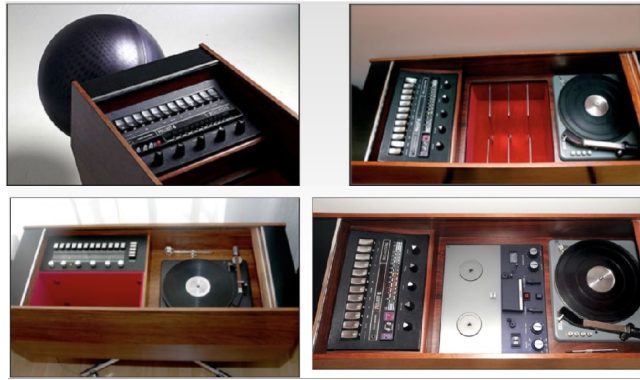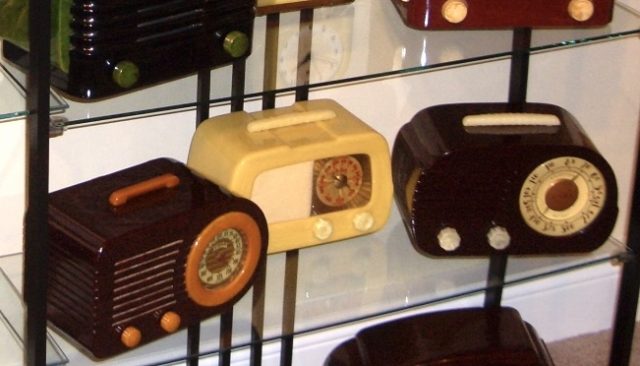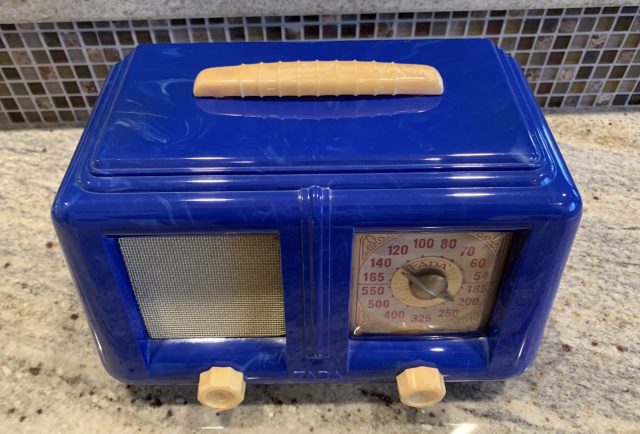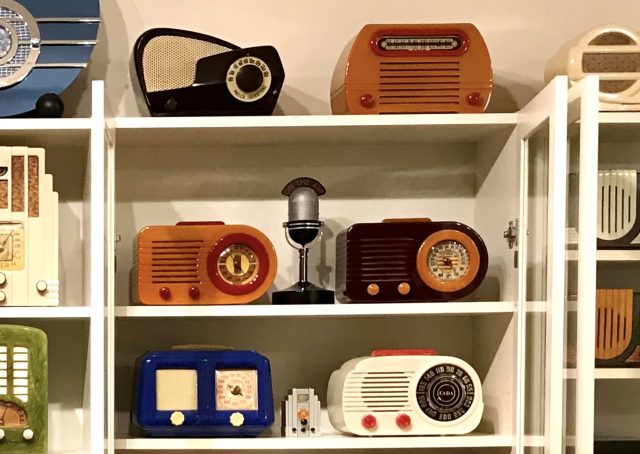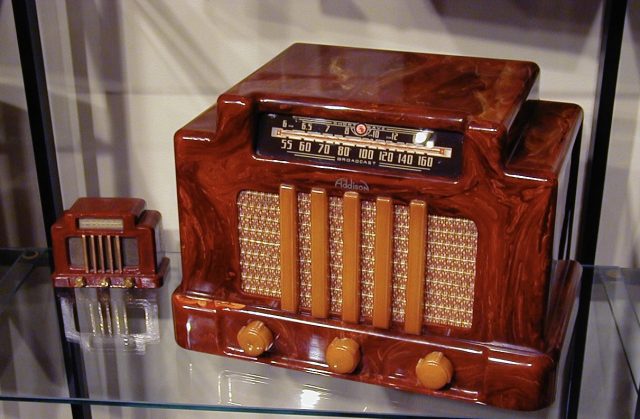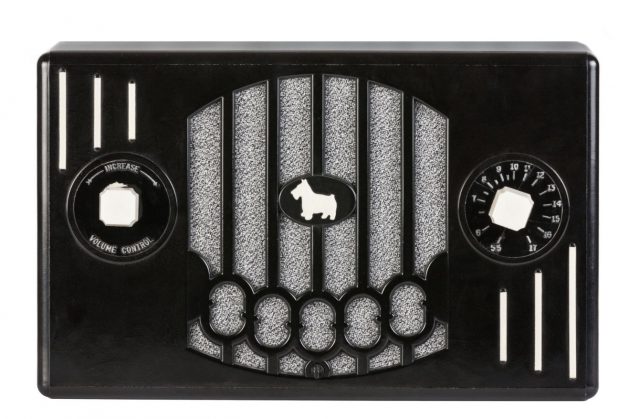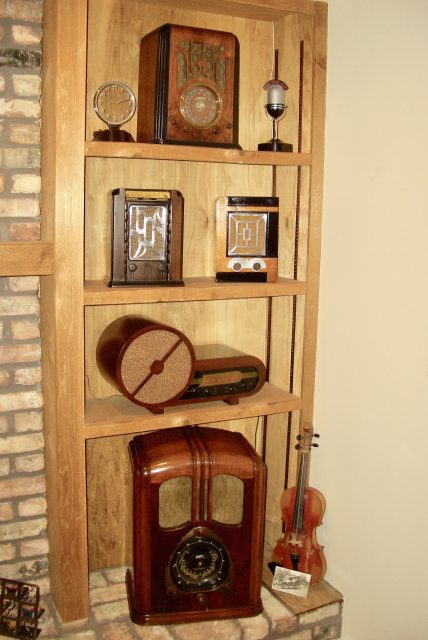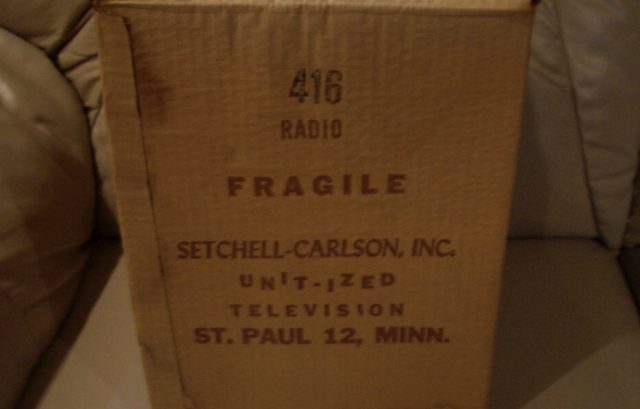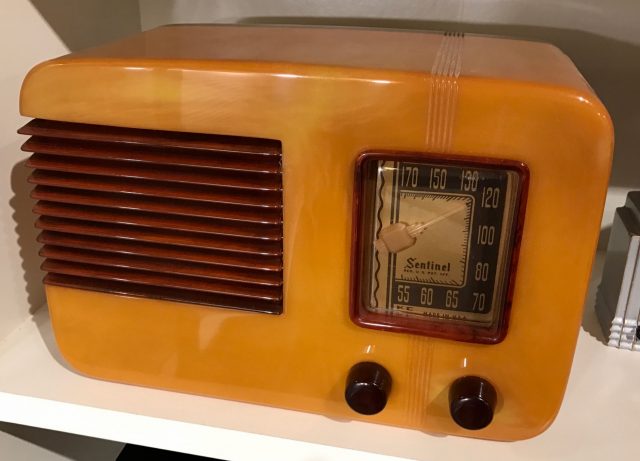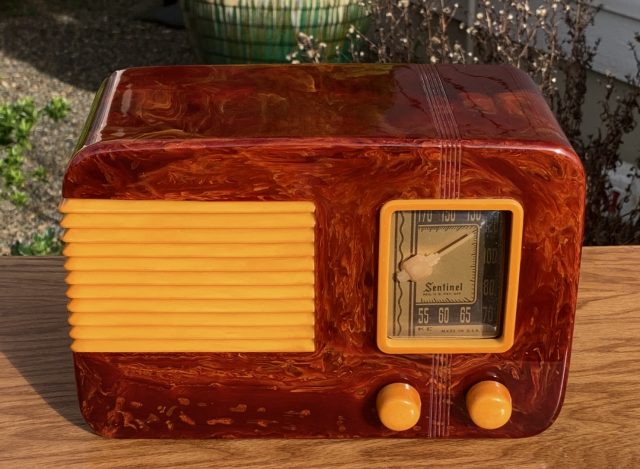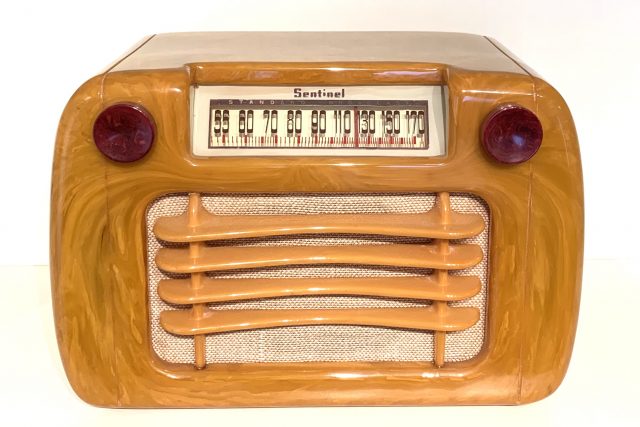Normally, these articles are about radios from the 30’s to 50’s, but we’re going to take a “giant leap for mankind” by moving from the Jet Age to the Space Age. It was in 1957, when this unit (below) was designed and manufactured in Germany under the name Kuba, using some Telefunken components.
This very dramatic design integrated radio, records, recording, and television into one unit. It had 8 speakers for hi-fi, and the wing-like TV portion could swivel for better viewing angles. This was available until 1962, and underwent some style updates.
Then in 1964, a small startup company in Canada, Clairtone, came up with this cool design called Project G.
The eye-catching parts of the look are the two globe speakers almost floating in air. The stereo was very expensive, about the same price as a small car at that time. In today’s money, it would be $20,000, and that’s the lower end of what they currently sell for. The top slid to one side to reveal a stereo amplifier, a record holder, and a turntable.
There were various designs through 1967, with components being moved around, and even reel-to-reel recorders being added. Another model, the Project G2, has an additional wooden section.
The case is not as deep as the Project G, and it has smaller speaker globes. Each globe could be rotated, and included a woofer and two tweeters. Here’s a comparison of the two models:
What got me started exploring space age stereos was when I spotted one on a TV show that was set in 1971. It was this “flying saucer” model by Weltron.
Here’s a close look at the stereo components inside.
Hidden under the lid are a record changer, an AM/FM radio, and the controls. You can see this 1970 Model 2005 has an 8-track tape recorder at the front. The 1973 Model 2007 changed that to a cassette recorder.
The Weltron was available in yellow, and although it had built-in speakers, the larger floor/shelf speakers could be added for better sound. The above photo includes one of the colorful portable sphere-shaped radio/tape players also made by Weltron.
Weltron’s space ship stereo had four round feet on the bottom so it could land as a table model. Just for a comparison with radios we collect, these Weltrons (refurbished) are mostly priced around $4,000.
All of these space age stereos are highly collectible, and the most popular ones still have parts being made for them, so collectors can return the stereos to functioning models.
Hope you fellow collectors of tube-type radios enjoyed a trek into the space age.
Extra: Speaking of 1970’s stereos…my “recording console” originally designed and built in 1973 wasn’t space age, but it did have two Sony reel-to-reel recorders (discrete 4-channel & standard 2-channel), an AR turntable, a space-age desk lamp, and a tiny alien playing a guitar.
Extra II: For an article about the Setchell Carlson “Jet” radio (that’s superimposed on the very first photo), there’s a link below this photo.
Here’s the link: https://radiospast.com/2020/03/setchell-carlson-jet/




